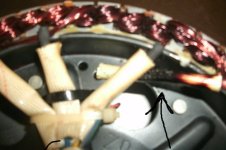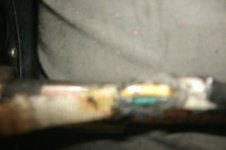im not sure we just "forgot" to keep it simple,
we have tried motors up to 15kg that completely dominate the feel of the bike and still only produce about half of the torque we need, whilst overheating cos it turned around half of the batteries energy into heat, -not sure which direction we should head there really, bigger motor agian?

total kiss returns you around 200w of continuous output power per kg of hub motor, just like in 1880 when engines had no active cooling you could nearly get a couple of horsepower from a 200kg engine.
i agree, Volkswagen went completely mad introducing ridiculously complex forced fan cooling in the beetle in about 1950, then it just got silly with liquid cooling and actively computer controlled electric fans, that all drivers have to put up with today.. :lol:
with an effective cooling system you can get motors up to 5000w continuous output per kg, so maby have another quick look at what power and weight you want on the the rear axle of your bike?
i consider my slackarsed $59 leafblower cooling setup to be crude 1950's style technology, but even the 100w it uses (and only when at full tilt) to be quite ok, cos when you pin it to say 5000w in to a hubbie off the mark you get over 4000w of ir loss, now with cooler copper you will save over 1000w

-good plan methods.
so to me keeping it simple is completely optional for everyone, and yep these tests are right on the mark to then very simply and easily improve your average hub motor out for a huge number of people.





